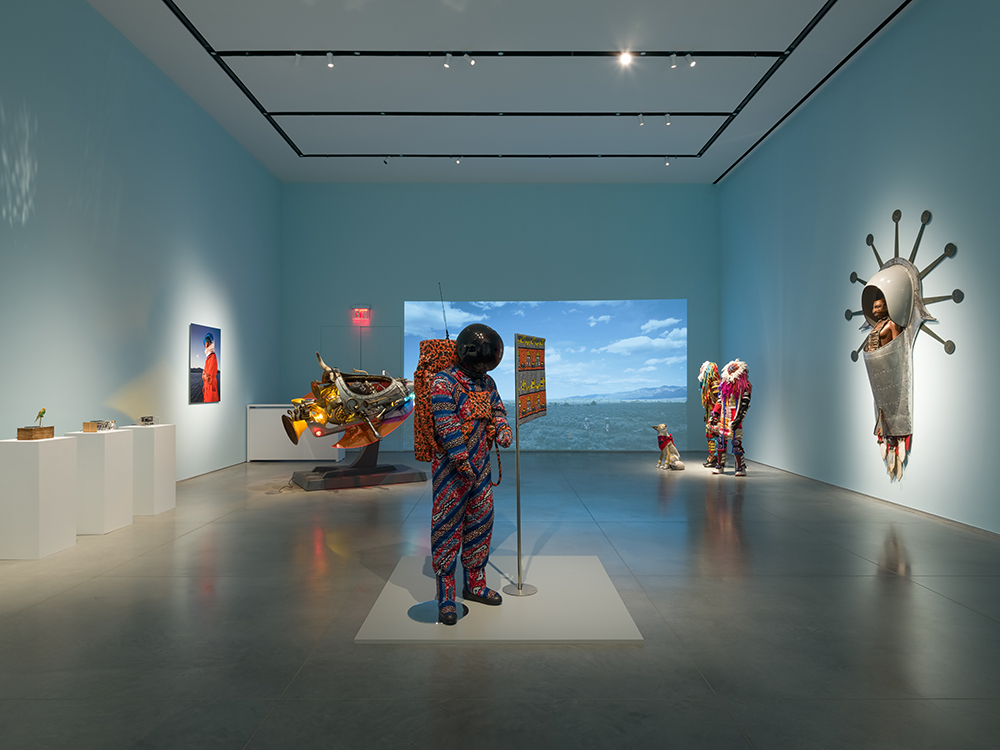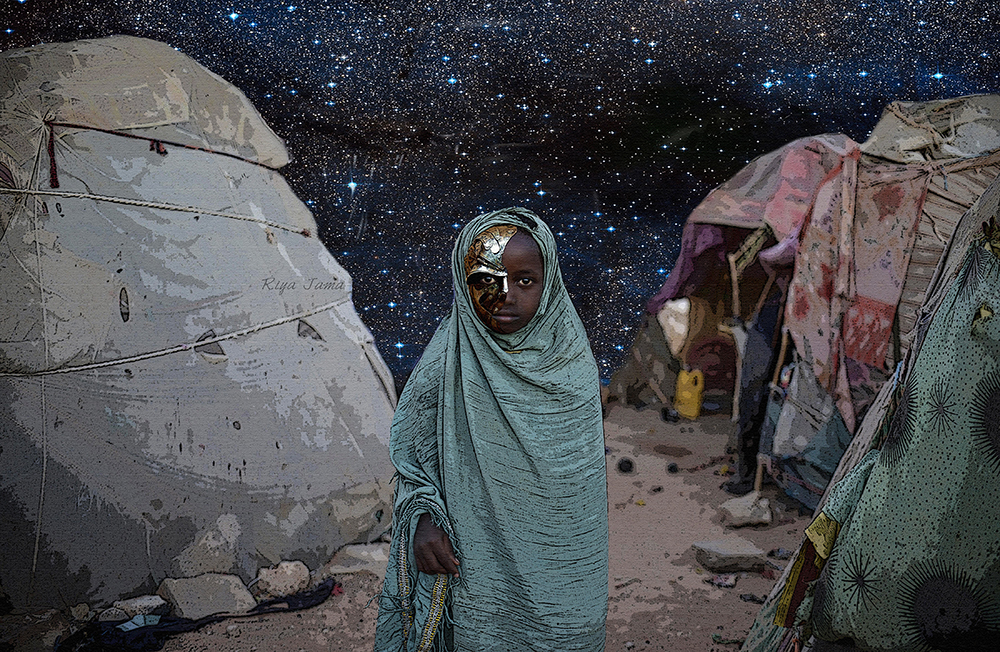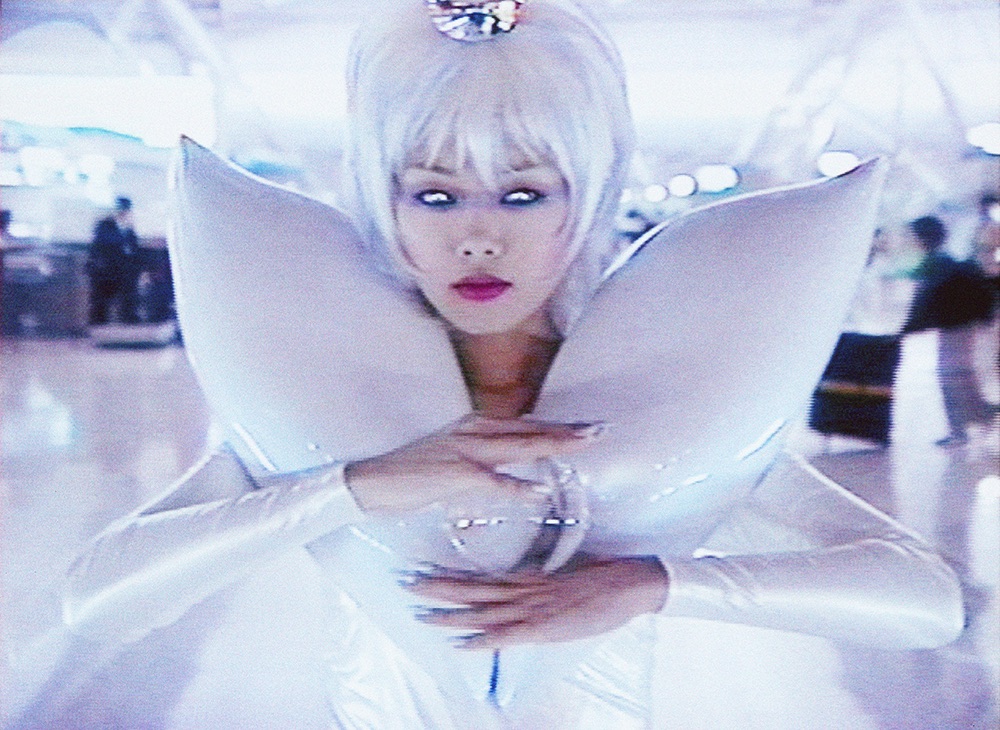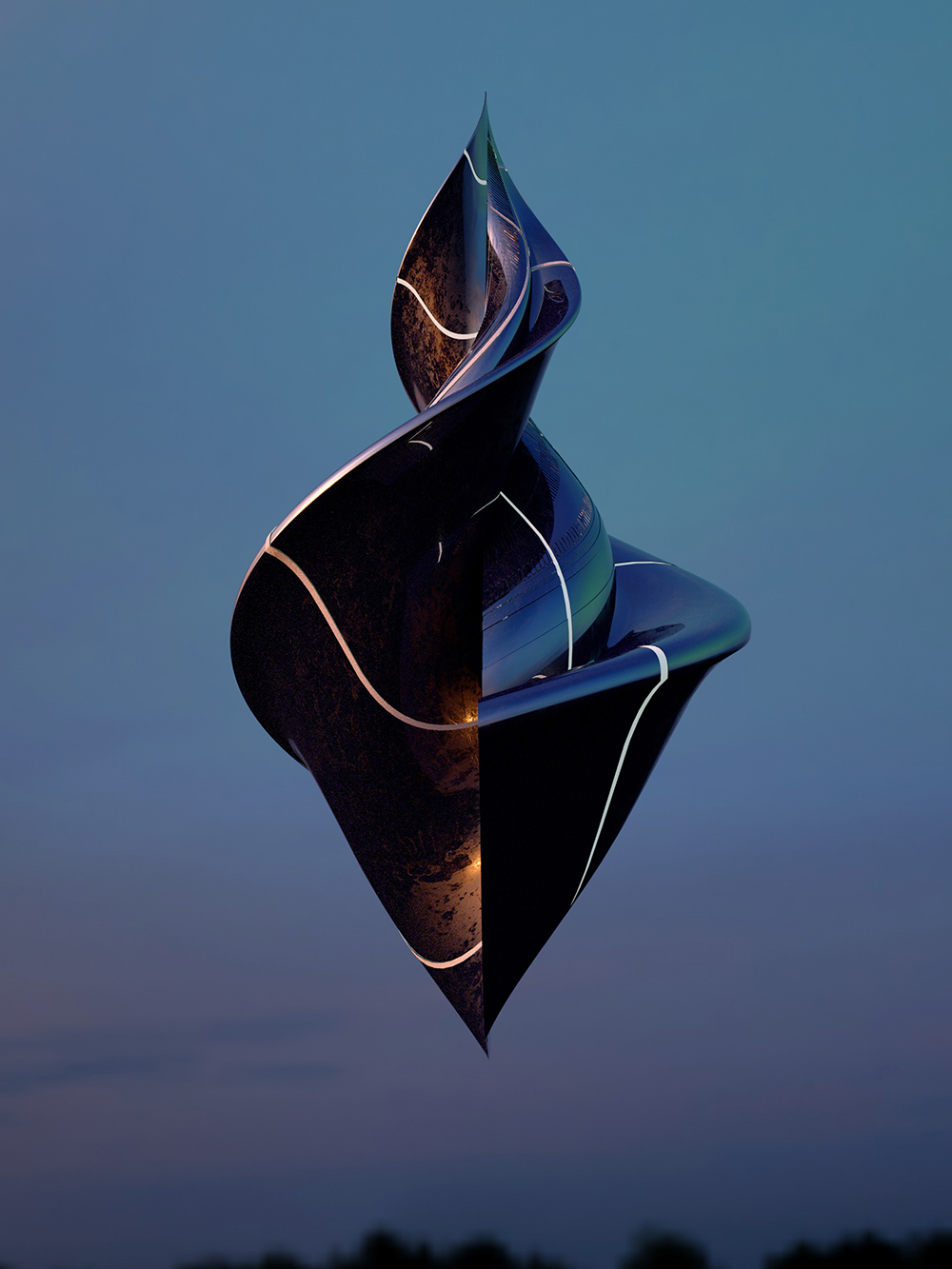
Installation view: “Utopian Imagination,” Ford Foundation Gallery, September 17–December 7, 2019. Photo: Sebastian Bach.
On my way to see “Utopian Imagination” (on view through December 7), the final installment of the artist and curator Jaishri Abichandani’s trilogy of shows at the Ford Foundation Gallery, I passed a group of Lyndon LaRouche acolytes. LaRouche, known over the last forty or so years as a convicted criminal, conspiracy theorist, and perennial candidate for president, died earlier this year, but his fringe beliefs live on through these dutiful members of his movement. They were handing out flyers such as INTERNATIONAL CALL TO YOUTH: The Age of Reason Is In The Stars!, which describes the climate activist Greta Thunberg as a “hedge-fund cover girl” for Wall Street, and Some Plain Facts Bearing On the Impeachment, which proclaims: “Remember, the oligarchy’s spokesman, the British House of Lords, have already instructed their assets in the United States that under no circumstances can Donald Trump have a second term.”
It used to be easier to dismiss fringe narratives like these, but things have changed: Robert F. Kennedy Jr. pushes anti-vax claims, Edgar Welch shot up the Comet Ping Pong pizzeria looking for an alleged (and quickly debunked) child-trafficking ring, and the aforementioned Thunberg gets picked on by President Trump for speaking about the realities of climate change. It’s a hard time not only to be sure of a narrative’s veracity but also of how to tell a better, more hopeful one. The pieces collected in “Utopian Imagination” provide glimpses of different futures, ones more joyous and inclusive.
It’s not a large show, but it doesn’t need to be. Abichandani has an eye for pieces that offer up their own stories, and the lack of accompanying text on the painted walls (blue, instead of the usual white, a quiet readjustment that resets the whole space) ensures that moving through the exhibition is an immersive and seamless experience. Abichandani draws inspiration from such writers and thinkers as Naomi Klein, Octavia Butler, and Rokeya Sakhawat Hossain, whose 1905 story “Sultana’s Dream” depicts a feminist utopia called Ladyland. “You need not be afraid of coming across a man here,” a character explains early in Rokeya’s tale. “This is Ladyland, free from sin and harm. Virtue herself reigns here.”
A few works here offer visions that resonate as strongly as a Ladyland. The first thing you see, even before entering the gallery, is Saks Afridi’s The Prayer Catcher, a flying mosque suspended vertically against a wall. It looks like part of a set for Muslim sci-fi action figures, and Afridi provides a compelling premise: “For a brief time, a mysterious spacecraft resembling a hovering mosque appeared, and every human on Earth was granted one answered prayer ever 24 hours.” Yinka Shonibare’s Cloud 9, an astronaut and flag rendered in bright colors and dizzying patterns, imagines an African-led space program. Zack Ove’s Sky Lark, a cobbled-together spaceship made of found materials (it’s the only piece here whose materials list includes both “vintage fairground ride” and “trumpets”), reimagines space travel as a method of transportation accessible to just about anyone.
Beatriz Cortez’s contribution encompasses the wishes and hopes of many more than just the artist. At the push of a button, her four Boxes of Wonder print out slips of receipt paper with quotes from famous authors and thinkers, dreams from the Guatemalan art collective Kaqjay Moloj, encouraging words from Cortez’s email inbox, and wishes from “a group of immigrants and border crossers.” One of the printouts I received read:
Cuando llegue el futuro:
When the future comes:We will have built dreams together
Habremos construido anhelos juntos
Near the back of the exhibition is one of its most striking pieces, Lola Flash’s Syzygy, a self-portrait created especially for this show. An artist and activist known for her involvement with ACT UP, Flash has often participated in work that challenges prevailing narratives, such as the photo project Kissing Doesn’t Kill: Greed and Indifference Do. In Syzygy, Flash wears a prison jumpsuit, a space helmet, and a pair of handcuffs, unlocked. Behind her, blue sky with a single cloud, forested hills, and rippling water fill the frame.
Shot from below, Flash towers over the scenery, as if swapped in for 2001’s space monolith, a human answer to assumptions about an automated future. It’s a composition that feels excited about a frontier. On the Ford Foundation Gallery’s Instagram account, Flash says of the photo, “It’s hard to think of life in the future when we’re not incarcerated.” But Syzygy offers a blueprint of a better, more galactic future, prisoners liberated and “jumping from planet to planet full of joy.”
It takes work to be optimistic. Thankfully, Abichandani and the artists featured in “Utopian Imagination” have done that work.
Lucas Adams is a writer and comics artist based in Brooklyn, New York. He is the cofounder and coeditor of New York Review Comics.
from The Paris Review https://ift.tt/35YvnkM





Comments
Post a Comment